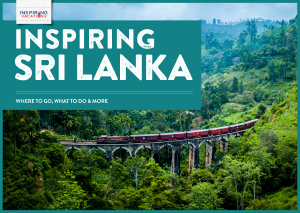From temples to stupas, here are the best historical and cultural attractions in Sri Lanka to add to your bucket list
Whether you’re a history buff, a culture seeker, or an adventurer wanting to explore a new destination in 2025, Sri Lanka is an island that has it all—from majestic temples and sacred stupas to the ruins of ancient kingdoms. Each site—some World Heritage Sites and lesser-known gems—offer a glimpse into Sri Lanka’s rich heritage and traditions. Here’s a list of our 10 favourite cultural treasures that await you on an incredible Sri Lanka tour.
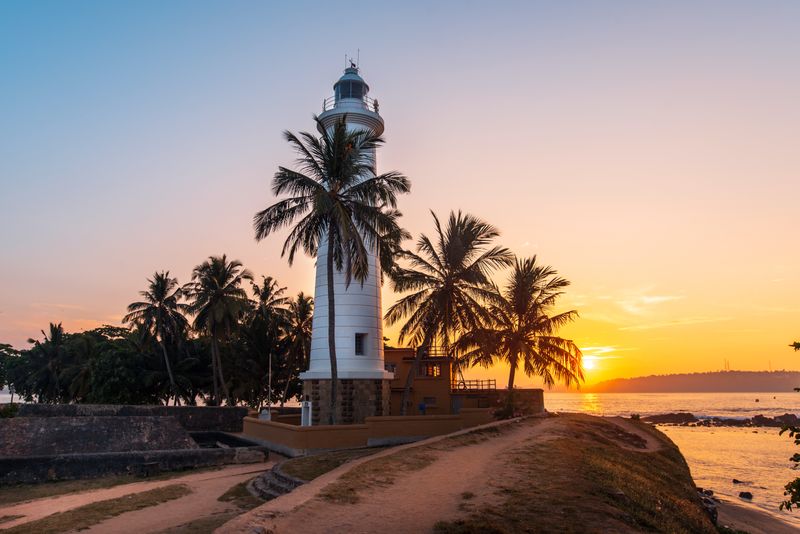
1. Sigiriya Rock Fortress
Located near Wasgamuwa National Park (known for its excellent elephant spotting opportunities), Sigiriya Rock Fortress is one of the top UNESCO cultural heritage sites in Sri Lanka. Like Machu Picchu, Sigiriya is a marvel of ancient engineering and its construction – on top of a granite rock 200 metres above the jungle surrounds—continues to baffle experts today. Also known as Lion Rock, Sigiriya is part of the UNESCO-listed Sri Lanka cultural triangle, alongside the ancient cities of Anuradhapura, Polonnaruwa, and Kandy.
Built by King Kasyapa as his citadel in 477-495 AD, the 15-hectare site is a must-see for those interested in Sri Lanka’s royal history. Before Kasyapa’s reign, Sigiriya was a Buddhist monastery, and after his death, it returned to its roots as a place of meditation.
The 15-hectare site also offers unexpected treasures on the way up the 1,200 steps to the top. And, of course, those spectacular views from the summit and the remains of the King’s palace make the climb worthwhile.
What To Look Out For:
The vibrant frescoes on the rock’s inner walls are as much of a highlight as the fortress itself. Thought to depict heavenly nymphs, the paintings are well-preserved and offer a glimpse into ancient Sri Lankan art. The best-preserved frescoes are found in the lower section. Also, don’t miss the Mirror Wall, a polished rock surface where you can see graffiti dating back over 1,600 years.
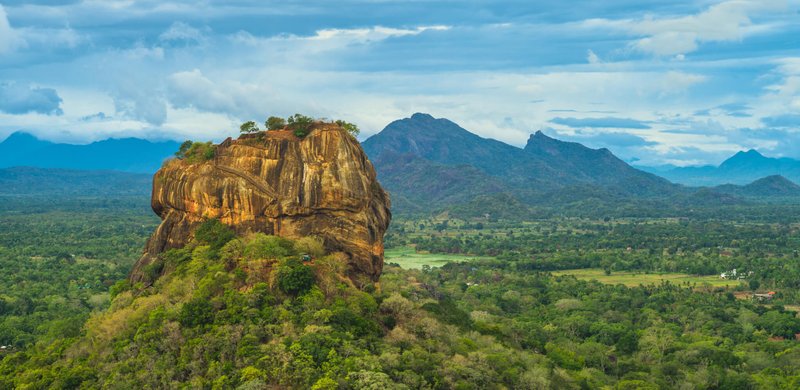
2. Temple of the Tooth Relic
One of the top UNESCO cultural heritage sites in Sri Lanka, this Buddhist temple in the heart of UNESCO heritage city, Kandy, is one of Sri Lanka's holiest sites. Thousands of believers come every year to pay homage to a rather unconventional but highly sacred relic—the left tooth of Gautama Buddha. It was smuggled to Sri Lanka from India in the 4th century AD and has been housed in Kandy since the 16th century.
For most of the year, visitors can view a replica of the Sacred Tooth Relic, as the actual tooth is kept safely inside a gold casket and only revealed to the public during special ceremonies. If you’re lucky enough to visit during the Esala Perahera (the Festival of the Tooth), which is held each July and August, you'll see the real deal. During this time, the tooth is paraded in a golden casket, a cultural event that locals eagerly anticipate. The grand procession features a stunning display of decorated elephants, traditional dancers, drummers, and various performers, all paying tribute to the ancient tooth.
What to Look Out For:
Surrounding the temple complex are beautifully landscaped gardens and serene courtyards. The main hall where the relic is kept is beautifully decorated with traditional Sri Lankan Buddhist art, including striking murals on the walls that depict scenes from Buddha’s life.
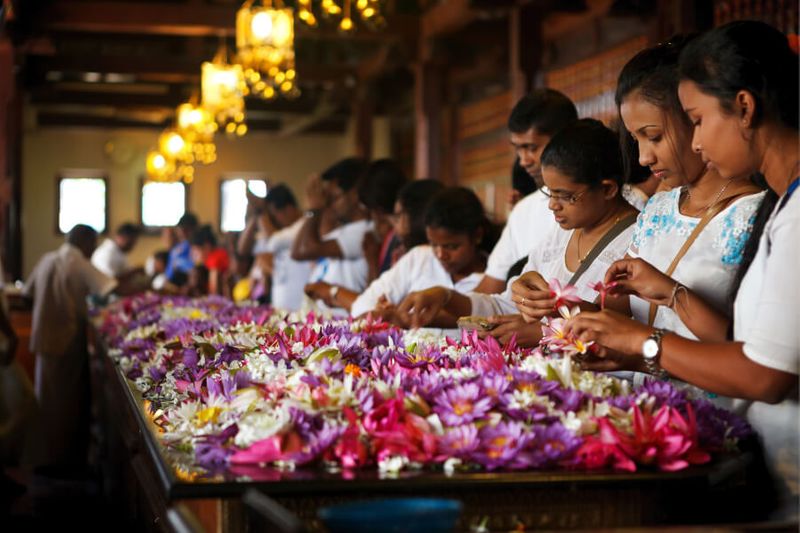
3. The ancient city of Anuradhapura
As the first capital of the country for over 1,300 years until 1017 AD, Anuradhapura is home to some of the best historical and cultural attractions in Sri Lanka: ancient stupas, monastic complexes, and royal palaces.
The ancient city ruins cover over 16 square miles, with experts saying even more is yet to be discovered. The architecture reflects its status as a centre of early Sinhalese civilisation. Built by King Dutugemunu in the 2nd century BC, the 300-foot-tall stupa is said to house relics of the Buddha and is a symbol of Sri Lanka's long-standing Buddhist heritage. Visitors can walk around the stupa, admire its intricate carvings, and take in panoramic views of the surrounding Anuradhapura landscape.
What to Look Out For:
Don’t miss the Sri Maha Bodhi Tree (also known as the Bo Tree), is said to have grown from a cutting of the original tree under which the Buddha attained enlightenment. Planted in 288 BC, it is one of the oldest living trees in the world with a recorded history. Also, be sure to explore the Ruwanwelisaya Stupa, one of the tallest ancient monuments in the world, standing at 103 metres. This sacred stupa holds deep significance for pilgrims, as it is believed to enshrine relics of the Buddha. A chamber, which has never been archaeologically excavated, is thought to contain relics of the Buddha, along with gold, silver, and other gems of significance.
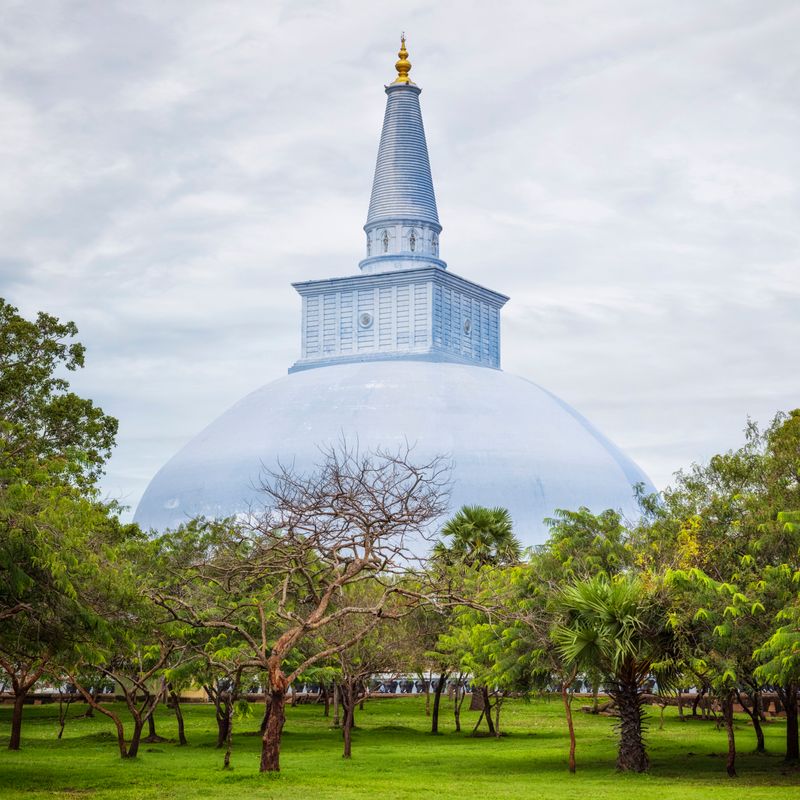
4. Kumana National Park
While primarily a nature reserve, Kumana is deeply tied to Sri Lanka’s cultural heritage. The park, also known as Yala East National Park, is home to ancient rock art, some of which date back over 2,000 years. The Kumana Cave paintings depict Buddhist and prehistoric themes.
What to Look Out For:
While most visitors come for the wildlife of course, keep an eye out for the Kumana Caves, which feature some of the island's most important prehistoric rock art. These paintings depict various animals, humans, and symbols, providing an insight into ancient Sri Lankan culture.
5. Dambulla Cave Temple
Dambulla is home to a series of beautifully painted caves that house Buddhist murals and over 150 statues. This rock temple complex dates back over 2,000 years and offers a blend of religious art, history, and breathtaking views of the surrounding area.
Dambulla’s cave temple dates back to the 1st century BCE and was created by King Vattagamani, who took refuge here when he was exiled. When he reclaimed Anuradhapura, the king turned the caves into a temple as a sign of gratitude. The site was later expanded over centuries, making it one of the best historical and cultural attractions in Sri Lanka.
What to Look Out For:
Inside the numbered caves, you’ll find over 150 statues of the Buddha. The most famous is the enormous reclining Buddha statue in Cave 1 (Temple of the Lord of the Gods), which is 14 metres long. Look up to admire the intricately painted ceilings, which are covered in Buddhist iconography and vivid depictions of religious stories.
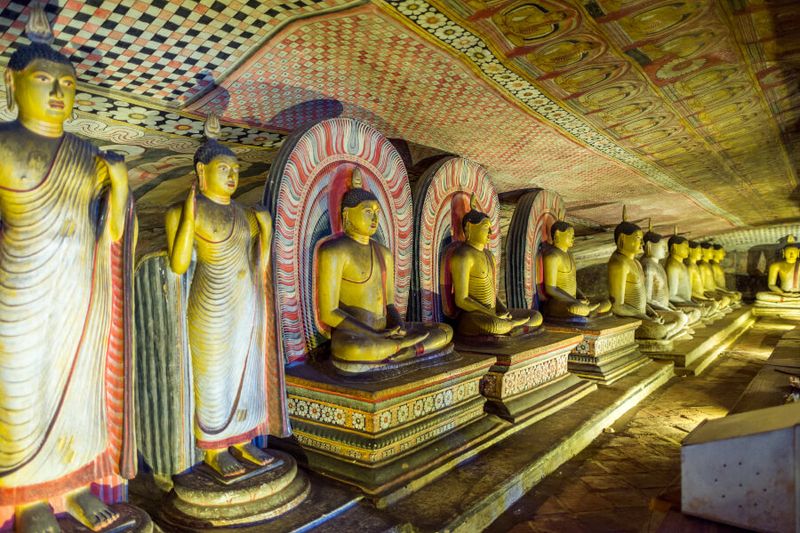
6. Galle Fort
One of the top UNESCO cultural heritage sites in Sri Lanka, Galle Fort is a much-loved addition to any tour. A blend of colonial and local architecture, it was originally built by the Portuguese in the 16th century and expanded by the Dutch in the 17th century. The fort served as a strategic base for the European colonial powers, and its architecture reflects a fusion of Dutch, Portuguese, and Sri Lankan influences.
What to Look Out For:
The clock tower and British-built lighthouse are striking landmarks, offering great photo opportunities. Wander through the narrow, cobbled streets where you’ll find beautiful colonial-era houses, and keep an eye out for art galleries and boutiques that have popped up in recent years, giving the fort area a lively, creative vibe.
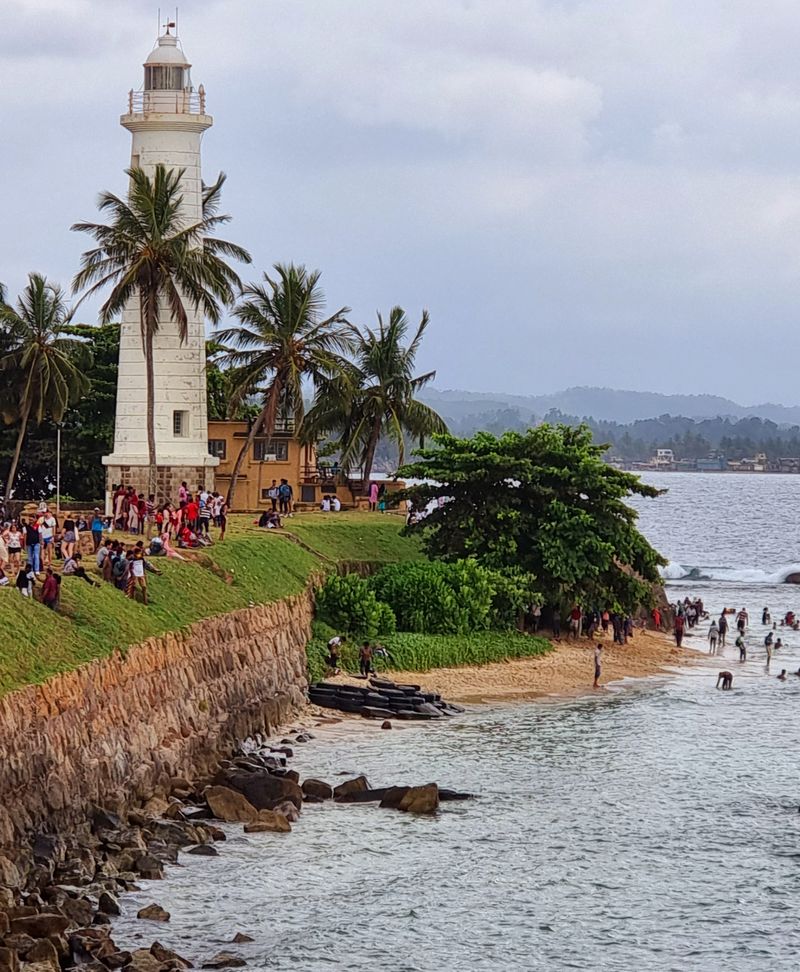
7. The Dutch Period Museum
Housed in a 17th-century Dutch mansion, the Dutch Period Museum in Colombo offers a detailed look at the colonial era. The mansion itself was originally built by the Dutch East India Company and was later used as a governor’s residence. It has since been used as a Catholic seminary, a military hospital, a police station and a post office. The museum’s artefacts and paintings provide an interesting glimpse into 17th-century life in Colombo.
What to Look Out For:
Look for the items that reflect the influence of Dutch colonial design, including historical documents and maps, as well as Dutch-era coins and paintings.
8. Mihintale
Located near the ancient capital, Anuradhapura, Mihintale is where Buddhism is believed to have been introduced to Sri Lanka in 247 BCE. The site is not as well-known as other religious sites in the country but is rich in history and significance and should be included on your tour of Sri Lanka’s cultural sites.
Mihintale is believed to be the site where Mahinda, a Buddhist monk from India, introduced Buddhism to the country. At the time, the ruling monarch, King Devanampiyatissa, converted to Buddhism here, marking a pivotal moment in history.
What to Look Out For:
Look out for the stone inscription that marks the spot where Mahinda is said to have met the king as you walk up the steps up the hill. At the summit, don’t miss the Sri Maha Stupa, where you can enjoy panoramic views of the surrounding plains and nearby Anuradhapura.

9. The ancient city of Polonnaruwa
As Sri Lanka's second ancient capital after the destruction of Anuradhapura in 993, Polonnaruwa offers a treasure trove of well-preserved temples, statues, and palaces and one of the best historical and cultural attractions in Sri Lanka.
The Gal Vihara rock temple, featuring intricate Buddha statues, is a highlight. Polonnaruwa served as the capital of Sri Lanka from the 11th to the 13th centuries. The city flourished under King Parakramabahu, who united the country under one rule and reformed Buddhist practices. He is credited with beautifying the capital and introducing massive irrigation projects, including the reservoir, Parakrama Samudra.
What to Look Out For:
Gal Vihara features a stunning set of Buddha statues carved into the rock, the most impressive of which is a 14-metre reclining Buddha entering parinirvana (or nirvana after death).
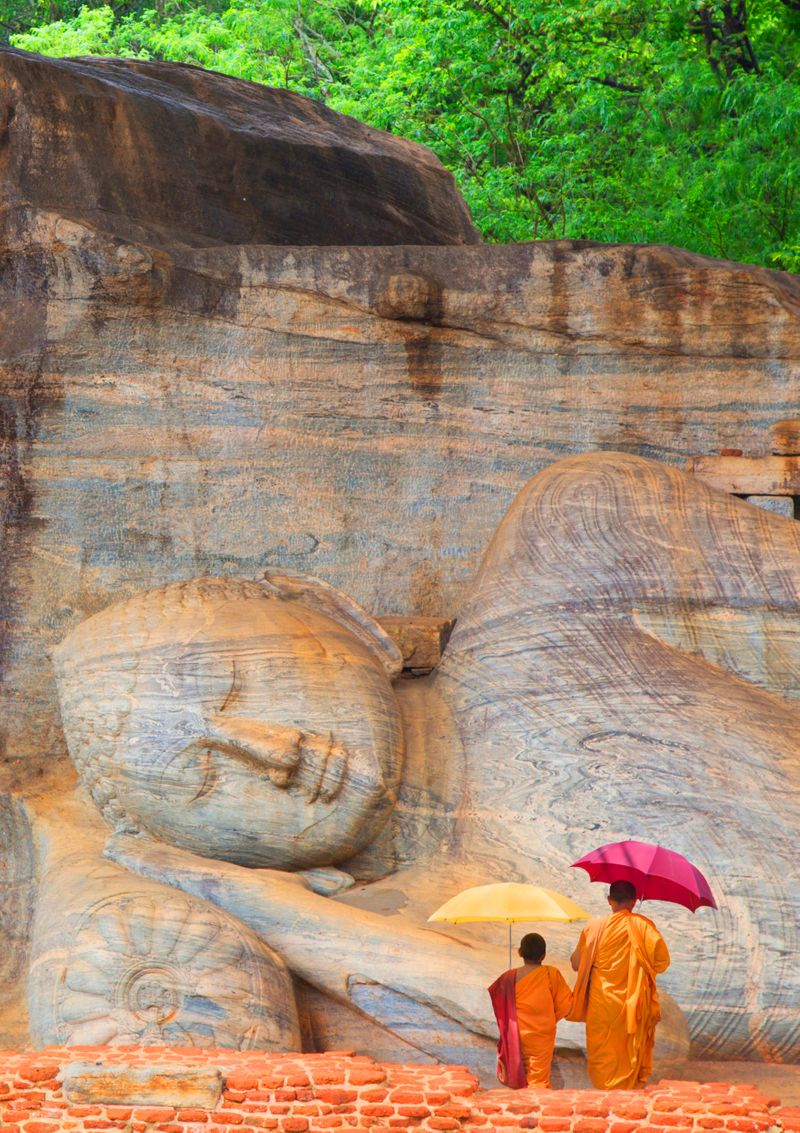
10. Jaffna
With its distinct Tamil culture and architecture, Jaffna in the north, offers a different cultural experience compared to the rest of Sri Lanka. Sites like Nallur Kandaswamy Kovil and Jaffna Fort give insight into the region’s heritage. Jaffna has long been a cultural and political centre for Sri Lanka’s Tamil population, and Nallur Kandaswamy Kovil is an important Hindu temple and a place of pilgrimage for Tamil Hindus.
What to Look Out For:
Visit the Nallur Kandaswamy Kovil, known for its vibrant, ornate architecture, including its large gateway tower covered in statues of Hindu gods. Jaffna Fort, like Galle Fort, was built by the Portuguese and later renovated by the Dutch and is an ideal spot to explore the military history of the region.
Inspired to visit Sri Lanka? We have an exciting selection of tours from 9 Days to 28 Days, with the option to extend your Sri Lanka tour to the Maldives and vibrant India. Check out our full range of Sri Lanka tours here.
